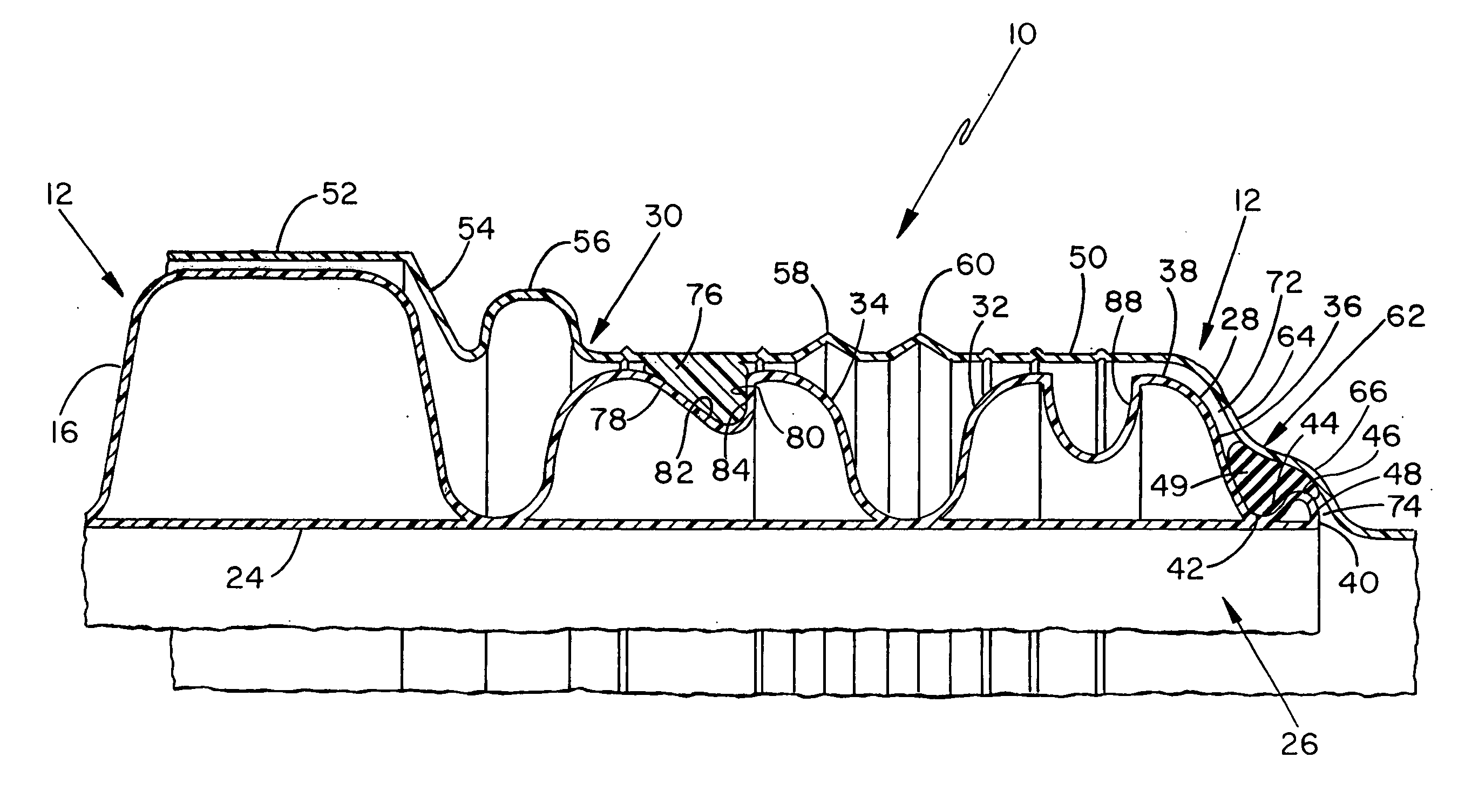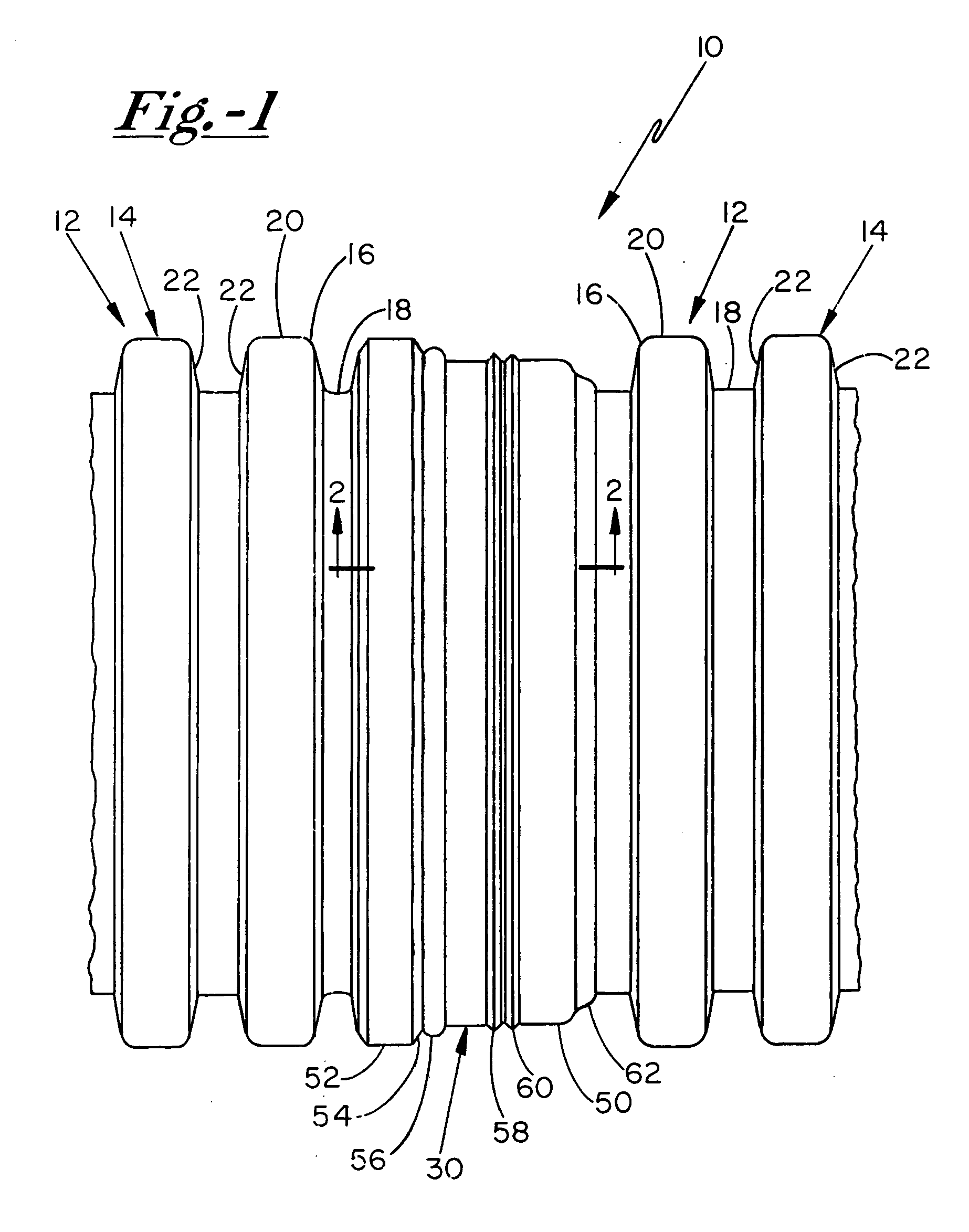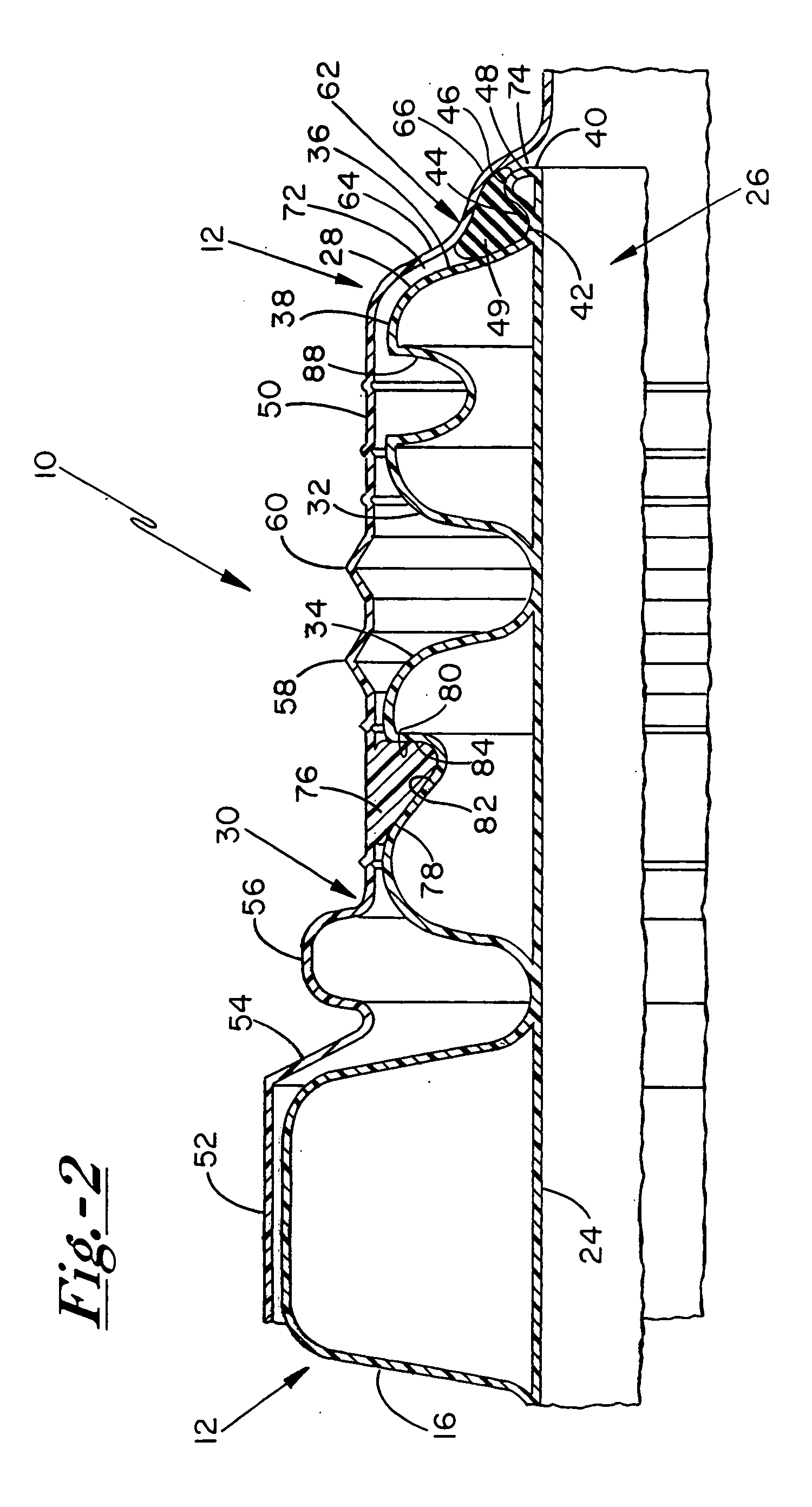Fluid-tight coupling system for corrugated pipe
a technology of corrugated pipes and coupling systems, which is applied in the direction of fluid pressure sealed joints, pipe joints, sleeves/socket joints, etc., can solve the problems of leakage between the spigot and the bell, exasperation of the problem of slippage, and the coefficient of friction of the gasket is reduced, so as to reduce the force needed for the spigot to be inserted. , the effect of reducing the coefficient of friction of the gask
- Summary
- Abstract
- Description
- Claims
- Application Information
AI Technical Summary
Benefits of technology
Problems solved by technology
Method used
Image
Examples
Embodiment Construction
[0028] With reference to FIG. 1 of the drawings, an improved bell and spigot coupling system 10 is shown which is particularly well-suited for use in joining sections of corrugated plastic pipe 12 in gravity flow drainage and sewage applications requiring watertight joints. In accordance with the present invention, the adjoining sections of pipe 12 each have an outer corrugated sidewall 14 defined by spaced apart successive annular ribs 16 with annular valley defining portions 18 deposed therebetween. Each successive rib 16 is formed having a rib crest 20 and annular rib walls 22 which extend radially inward from the crest 20 to interconnect with and define the adjacent valley defining portions 18 of the sidewall 14. As shown best in FIG. 2, the corrugated pipe 12 is preferably of the dual wall type having an inner cylindrical smooth liner 24 that is attached to and integrally formed with the outer corrugated sidewall 14 at each of the valley defining portions 18 thereof.
[0029] In ...
PUM
 Login to View More
Login to View More Abstract
Description
Claims
Application Information
 Login to View More
Login to View More - R&D
- Intellectual Property
- Life Sciences
- Materials
- Tech Scout
- Unparalleled Data Quality
- Higher Quality Content
- 60% Fewer Hallucinations
Browse by: Latest US Patents, China's latest patents, Technical Efficacy Thesaurus, Application Domain, Technology Topic, Popular Technical Reports.
© 2025 PatSnap. All rights reserved.Legal|Privacy policy|Modern Slavery Act Transparency Statement|Sitemap|About US| Contact US: help@patsnap.com



